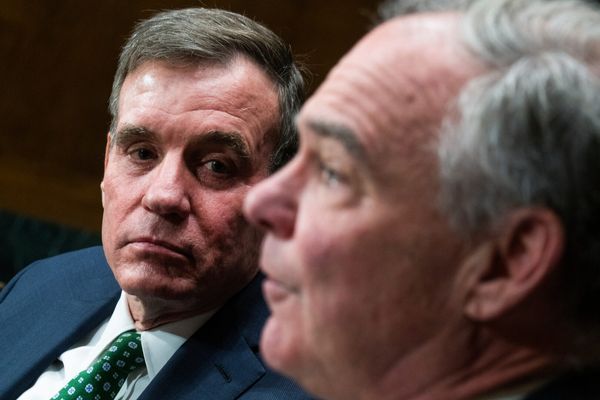There’s no shortage of risks that you’ll face in retirement, but two, in particular, are taking center stage at the moment: market risk and sequence-of-returns risk.
Markets are volatile, Wade Pfau, founder of Retirement Researcher and Professor of Retirement Income at The American College of Financial Services, writes in his most recent book, Retirement Planning Guidebook. And market volatility causes investment returns to vary over time. “Even with an average market return in mind, it is possible that markets could perform at a below-average rate for a prolonged period,” he writes.
And related to this, market volatility is further amplified by the growing impact of sequence-of-return risk in retirement. “This is the heightened vulnerability individuals face regarding the realized investment portfolio returns in the years around their retirement date—it adds to the uncertainty by making retirement outcomes more contingent on a shorter period of investment returns,” says Pfau, who also is the director of retirement research at McLean Asset Management.
Put another way: Sequence-of-returns risk is the risk that a retiree withdraws money for living expenses from retirement accounts that are falling in value. Imagine, for instance, a retiree with a $1 million portfolio who needs to withdraw $40,000 per year from that account. Now imagine that portfolio, after withdrawing $40,000, declines 16.6% in year one to $800,000, and then in year two, after withdrawing another $40,000, declines another 7.9% in year two to $700,000. That retiree is now looking at a nest egg that likely won’t fund their desired standard of living throughout retirement.
‘Worst Returns at the Worst Possible Moments’
“I would characterize sequence-of-returns risk as being the risk of the ‘worst returns occurring at the worst possible moments,’ says Andrew Clare, a professor of asset management at Bayes Business School City, University of London and co-author of Reducing sequence risk using trend following and the CAPE ratio.
And managing this risk is very difficult. “It requires careful risk management; transitioning to lower risk asset classes at these crucial times – such as the point of retirement – is the usual way of dealing with it,” says Clare. “However, the cost of this could be lower returns.”
In his book, Pfau highlights four general techniques for managing sequence risk in retirement.
Spend Conservatively
Even though retirees want to keep spending consistently on an inflation-adjusted basis throughout retirement, one option to manage sequence risk in retirement is to spend conservatively, according to Pfau.
In his book, Pfau writes:
“With a total-returns investment portfolio, an aggressive asset allocation provides the highest probability of success if the spending level is pushed beyond what bonds can safely support and annuities are not otherwise considered. The primary question with this strategy is how low spending must be to ensure a sufficient probability of success.
“Combining an aggressive investment portfolio with concerns of outliving your assets means spending must be conservative. Ultimately, fearful retirees may end up spending less with an aggressive investment strategy than they might have had they focused more on fixed-income assets. This aggressive portfolio/conservative spending strategy can be rather inefficient, as the safety-first school argues that there is no such thing as a safe spending rate from a volatile investment portfolio.”
The bottom line? This approach, which seeks to mitigate sequence-of-returns risk, can actually increase it, as there is no lever to provide relief after a market decline, according to Pfau. “The only solution is to sell more shares to keep spending consistent,” he wrote.
Maintain Spending Flexibility
Another approach keeps the aggressive investment portfolio of the “spend conservatively” strategy while allowing for flexible spending, says Pfau. “Sequence risk is mitigated here by reducing spending after a portfolio decline, thereby allowing more to remain in the portfolio to experience any subsequent market recovery,” he wrote.
This strategy, however, “results in volatile spending amounts, so most practical approaches to flexible retirement spending seek to balance the trade-offs between reduced sequence risk and increased spending volatility by partially linking them to portfolio performance,” Pfau writes.
Reduce Volatility (When it Matters Most)
A third approach to managing sequence-of-returns risk is to reduce portfolio volatility, at least when it matters the most. “A portfolio free of volatility does not create sequence-of-returns risk,” writes Pfau.
Essentially, however, individuals should not expect constant spending from a volatile portfolio. “Those who want upside (and, thus, accept volatility) should be flexible with their spending and should make adjustments,” he wrote.
So, what then are some ways to reduce volatility on the downside when the volatility could have the largest impact. According to Pfau, you could hold fixed-income assets to maturity or use income annuities.
Another approach, according to Pfau, is to use something called a rising equity glide path. With this approach, Pfau writes, you would start with an equity allocation that is even lower than typically recommended at the start of retirement, but then slowly increase the stock allocation over time. “This can reduce the probability and the magnitude of retirement failures,” he says. “This approach reduces vulnerability to early retirement stock market declines that cause the most harm to retirees.”
Jim Sandidge, a retirement researcher and author of Chaos and Retirement Income, also recommends this approach. “You manage market risk and sequence risk by using a conservative allocation early to minimize the frequency and magnitude of losses and gradually transition to more growth,” he says. “You can also manage it through cash flow allocation by skipping increases in the early years or in response to negative years.”
Avoid Selling at Losses
The fourth way to manage sequence risk is to have other assets available outside the financial portfolio to draw from after a market downturn. One could, for instance, “maintain a separate cash reserve, perhaps with two or three years of retirement expenses, separate from the rest of the investment portfolio,” Pfau says.
One could also use the cash value of permanent life insurance policies as a reserve and/or a line of credit with a reverse mortgage to serve as a reserve, writes Pfau.
Of note, in practice, more than a few advisers use not just one option when managing sequence of returns risk. They might, for instance, use what’s called bucket strategy, or time segmentation, or asset-liability matching. With this approach, the adviser puts two to three years of retirement expenses in cash, and then builds a bond ladder in which the bonds owned mature in the year the retiree needs the money for living expenses in years four to 10. And, then put the rest of a client’s portfolio in stocks and bonds for fund retirements expenses more than 10 years away.
Focus on Managing Negative Returns
To be fair, Sandidge says the emphasis on sequence risk obscures what retirees should focus on. “I would argue that sequence of returns risk is superfluous information or unnecessary jargon that will create mental dazzle and distract from the essence of the problem which is managing the effects of negative returns,” says Sandidge.







